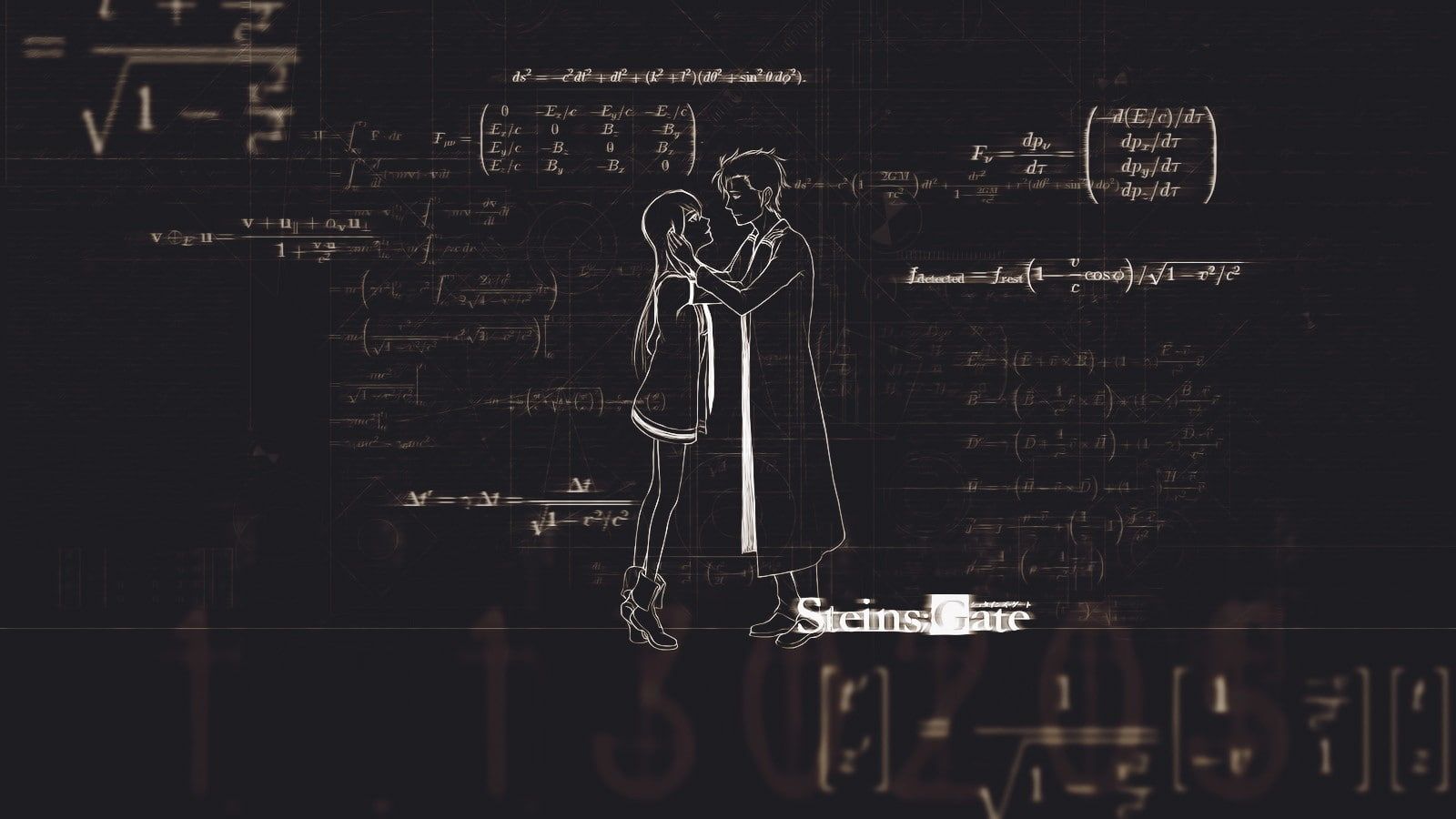There is no end though there is a start in space. — Infinite.
It has (its) own power, it ruins, and it goes though there is a start also in the star. — Finite.
Only the person who (has) wisdom can read the most foolish one from the history.
The fish that lives in the sea doesn't know the world in the land. It also ruins and goes if they have wisdom.
It is funnier that man exceeds the speed of light than fish start living in the land.
It can be said that this is (a) final ultimatum from the god to the people who can fight.
I’ve always been a big believer of alternate timelines coinciding in real-time. Prognosticating implications that have profound impact between each existence. One’s existence in multiple universes, but have their own happenstance rather than entailing duplicated events. But one’s decisions will trigger an outcome set in their alternate reality, affecting their multiverse counterpart rather than varying consequences at their respective forefront. Steins;Gate is more than a series of visual novels and Japanese animation, it’s a deep dive into the investigations of multiple streams diverging with the possibility of leaping between each reality, yet retaining memories of another. As a child I would have visions of a previous life, and explain them in detail to my Mum, which lead me to be a big believer in re-incarnation and a sundry universe coinciding with various others.
Briefing myself with the series synopsis, I knew that I would be in for a thrill. The subtle nods to Spielberg’s Back to the Future franchise, and other Hollywood blockbusters like the Philadelphia Experiment, Steins;Gate’s narrative demonstrates ubiquity within its concurrent plot. Think of existence as one straight line – tunnel if you will; as we navigate our lives down one path, another path with the exact same people, the exact same traits, and a mirrored world sits alongside but is unaware of the other. As it’s in our human nature, we go on about our daily lives with differing events and deviated motives that are not of the same in our current timeline. Example being, you visit a friend in one timeline, and he lends you a book, but in the alternate reality you stay at home and watch a movie.
Leaping between these two timelines and retaining memories of one will have significant impact on your psyche, but noticeable changes in your surroundings are apparent regardless of personality and characteristics remaining the same. To pontificate such an utterly outrageous theory, certainly lures those that are intrigued in its philosophy. Steins;Gate’s excellence in challenging the very fabric of world lines and worldly matter expresses a convincing depiction of these supposedly debunked prophecies coming to fruition. A tale of two timelines entailing severe ramification for exposing itself to a self proclaimed “Mad Scientist” Hououin Kyouma. Believed to be under surveillance by the government, real name Okabe Rintarou studies the online manifesto of one “John Titor”, who claimed to have travelled from the year 2036.
The alleged time traveller had claimed to have been part of an experiment to send military back to the year 1975 to retrieve an IBM 5100 computer, which had the capacity to recode multiple programs that had unfortunately failed in the future. In reality, Tito’s publicised entries were said to cause an online stir, with many conspirators believing his journals. A great portion of these myths became the series’ source material, with some original input for dramatic effect. Regardless, Steins;Gate managed to carry what was once touted a joke, which had an investigation determine the case a fraudulent prank by Larry and Morey Haber, a pair of computer scientists, trolling multiple conspiracy boards under the handle “TimeTravel_0”. But what if Titor was in fact a real person? What if he had actually left his world line to claim the antique tech but was trapped in our world line?
The complexity of its premise exhumes Titor’s claims, with the young scientist protesting a college lecture held by Dr. Nakabachi, who claims to have the expertise to nullify all claims of time travel ever happening. Accusing the professor of plagiarising Titor’s work, Okabe questions Nakabachi’s integrity when suddenly he’s met with an irritated, fiery redhead that drags the pompous intellectual from the class, demanding to know what message the deranged scientist was trying to convey. Bewildered, Kyouma states his case arguing that he’s never met the strange woman in his life. She refutes this by recounting an event which by Okabe’s memory had never occurred. Labelling the confounded woman a spy of “The Organisation” – a fictionalised government group Okabe believes is watching his every move – he flees the scene, and hides in a nearby stairwell reflecting on his encounter with this “lunatic”.
Moments later, a scream is bellowed down the hallowed halls of the university. Okabe makes haste towards where these loud shrieks were heard, where he then finds the bloodied corpse of one Makise Kurisu – the girl that had confronted him earlier – left lifeless mere minutes after his conversation with her. The entire faculty evacuates the premises, leaving Okabe in complete shock while he tries his best to evaluate the situation. Walking home with his close cohort, Mayuri Yushii, he sends a text message off to an associate confirming the murder of Makise. Upon pressing send, a brief sensation overrides his cognitive state, almost partially erasing his memory. The once bustling metropolis of Akihabara was a ghost town, desolate of patrons with only the young scientist and Mayuri present. Quaking in disbelief, Rintarou interrogates Yushii, asking if she saw crowds of people instantly disappear just as he did. She denies there being anyone in the area during that time.
It’s at this moment, Okabe looks up to notice an aircraft had landed into the side of the university building without him knowing of such incident occurring. The phenomenon known as “Reading Steiner” is said to be an amalgamation of false memories and deja vu. Yet, these conjured flashbacks are theorised to be real-time events that coincide with our world line. So what just happened? As the day goes on and following events begin to unravel this tangled tale of wormholes, Rintarou questions his own mindset by reading more into supposed claims made my Nakabachi, by cross examining posts laid out by Titor online, only to discover his text sent to close friend Daru Hashida – a member of “Okarin’s” Gadget Lab, otherwise known as the apartment complex above a pawn shop – on the day of Makise’s murder had travelled back in time.
The absurdity of the situation escalates when Okabe and Daru visit the university for the pair to see standing just outside an elevator is a completely, unharmed and alive Makise Kurisu. Refusing to believe the situation, Okabe claims to have seen Kurisu skewered like a pig. His psychotic meltdown is met with disdain from both Makise and Daru, with his associate dragging the scientist away. Needing to confirm his hypothesis on wormholes and alternate worldlines, Okabe consults Titor on the grandfather paradox theory. Titor is quick to bring up the inconsistencies of the matter being completely erased by meeting your own self in the past. While worldlines exist, there is no end to them, they are infinite in value. Meaning, if there is one worldline where someone you know is killed or murdered, their existence in other worldlines will remain unscathed. The possibility of one’s destiny within each worldline is presumably different; or so it’s thought to be.
Steins;Gate’s insanely creative story encases a deep dive into the recesses of fact, fiction, science and mythology all to dissect the philosophy of time. Sure, it’s outlandish set-pieces and sequences fit comfortably within the medium, but it’s no ordinary Anime. An action-adventure style tale, of one trying to best those that hold the key to intelligence above imagination, yet seems bold enough to challenge those that stand in his way for the truth. A redemption story, a love story, a fantasy tale; the series itself manages to envelope many aesthetics with hopes of a satisfactory outcome for each character involved. A long haul into the crooked works of an untried government, looking to perform experiments on all matter without hesitation. Recall the L.H.C. (Large Hadron Collider) that made breaking news around the world in 2008? It’s referenced with the possibility that black holes had been created unbeknownst to society.
While our concern was the world ending, what we didn’t take into account was the fact that they could have produced multiple gateway points to concurrent wordlines. This is how astonishing, and how profoundly deep Steins;Gate gets into the discussion of time, existence, matter and the possibility of folding the fabric of space in half. The franchise has cemented its legacy by being one of the first modern-age anime’s to involve reality’s qualms and questions on relativity, and hypothesise on multiple possibilities conceptualised as fact. Could worldlines materialise and diverge from existing ones in realtime? Does the universe branch out in multiple paths? Is the butterfly effect more than a paranormal state of reactivity? These are all questions that are theorised and broken down within each episode of this insanely palpable series, just as intended; This is the choice of Steins;Gate.
– El Psy Kongroo.
Steins;Gate - White Fox
AVAILABLE NOW ON:


